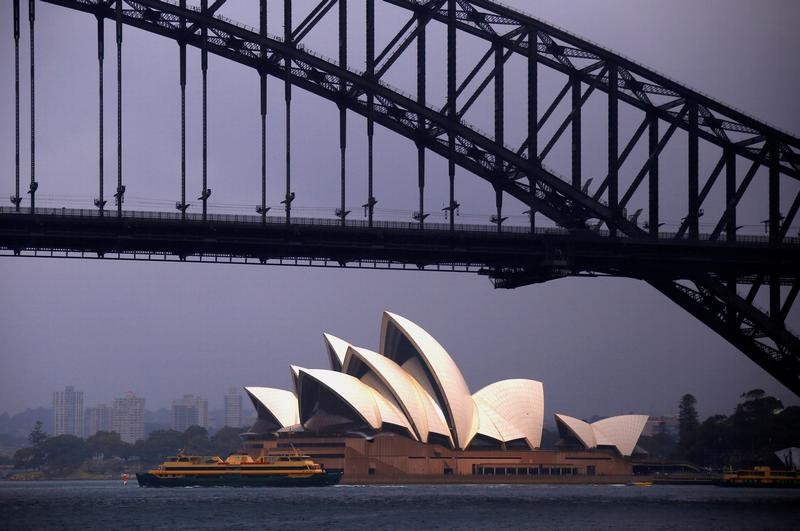Investing.com-- Australia’s economy grew slightly less than expected in the third quarter on weak export demand, particularly in China, although domestic spending remained robust amid high interest rates and inflation.
Gross domestic product grew 0.2% quarter-on-quarter in the three months to September 30, data from the Australian Bureau of Statistics showed on Wednesday. The reading was below expectations of 0.3%, and slowed from the 0.4% quarterly growth seen in the second quarter.
On an annual basis, GDP grew 2.1%, beating expectations of 1.7% and remaining steady from the prior quarter. But the year-on-year figure was elevated chiefly by a low base of comparison from 2022.
Markets were braced for a disappointing GDP reading after data earlier this week showed Australia unexpectedly logged a current account deficit in the third quarter, especially as economic contributions from exports contracted on weakening demand in top market China.
Exports during the quarter fell for the first time since March 2022, as warmer weather conditions across the globe dented coal and LNG exports, while economic weakness in China dented iron ore shipments- one of the country's biggest exports.
Sluggish Chinese growth has presented major headwinds to the Australian economy in recent years, given that the mainland is Australia’s biggest export destination. Chinese demand for commodities and consumer goods has fallen substantially this year as a post-COVID economic rebound failed to materialize.
This was offset by strong domestic demand in Australia, which remained underpinned by steady government spending and capital investment. The government had rolled out a string of subsidies this year to help ease the impact of high inflation on household spending.
But household spending remained languid in the third quarter, while the household saving to income ratio sank to 1.1 from 2.8, reaching its lowest level since December 2007. High interest rates and inflation were a key weight on savings this year, as wage growth struggled to keep up with inflation.
Some large-scale sporting events still kept discretionary spending on food elevated.
Wednesday’s reading indicates that while the Australian economy is cooling as expected by the Reserve Bank, there still remain some pockets of strength which could keep inflation sticky in the coming months.
The central bank had kept interest rates on hold this Tuesday, but reiterated its warning that inflation risks persisted for the economy.
